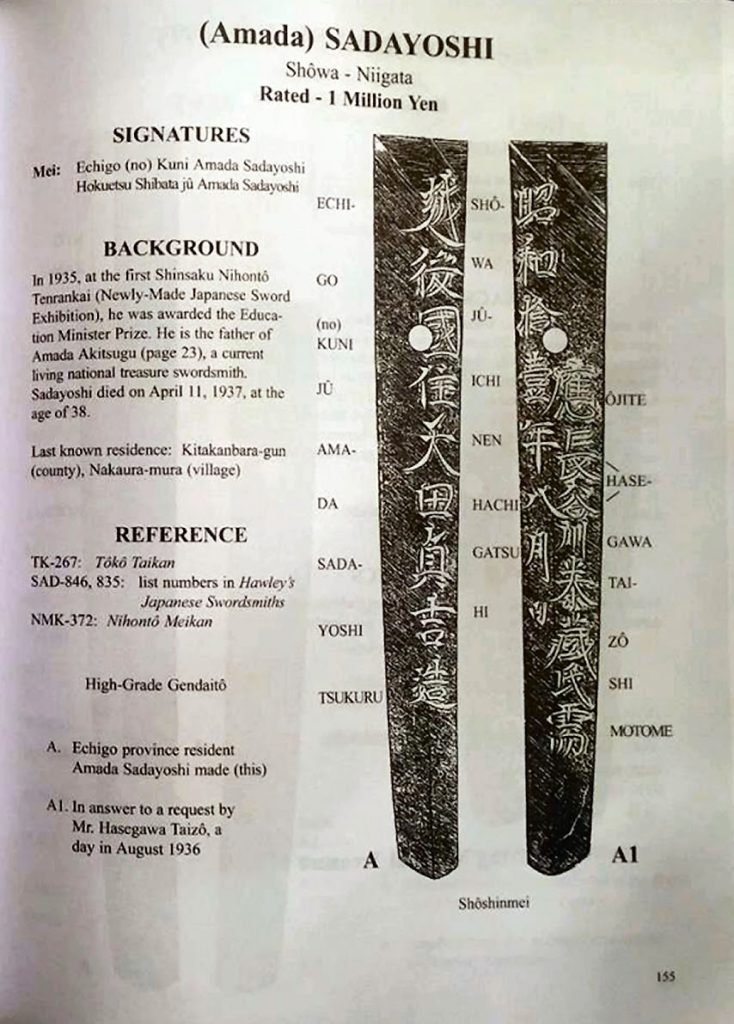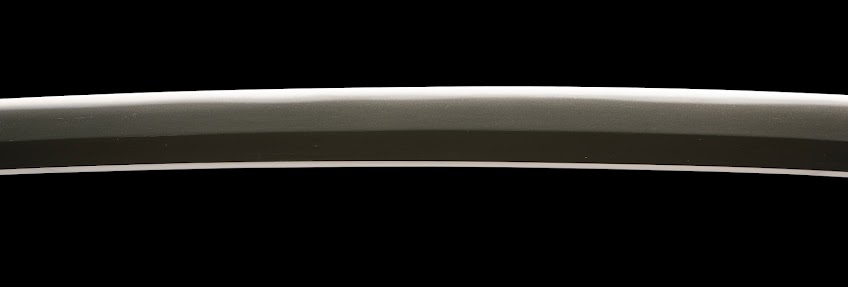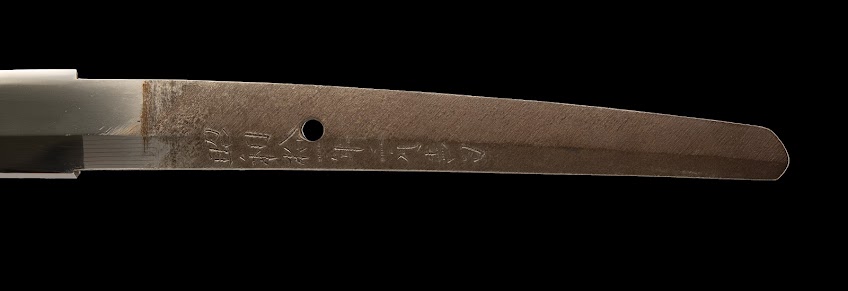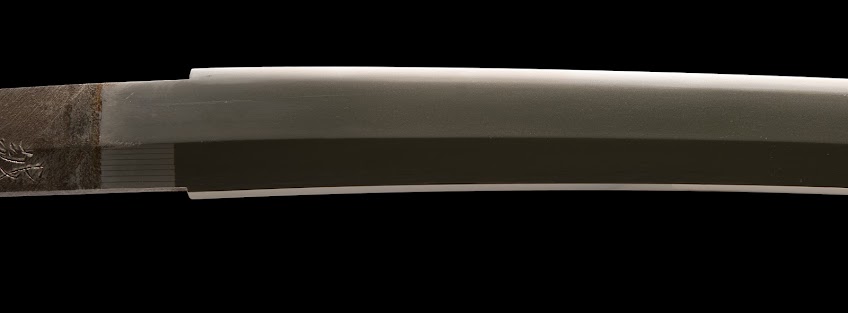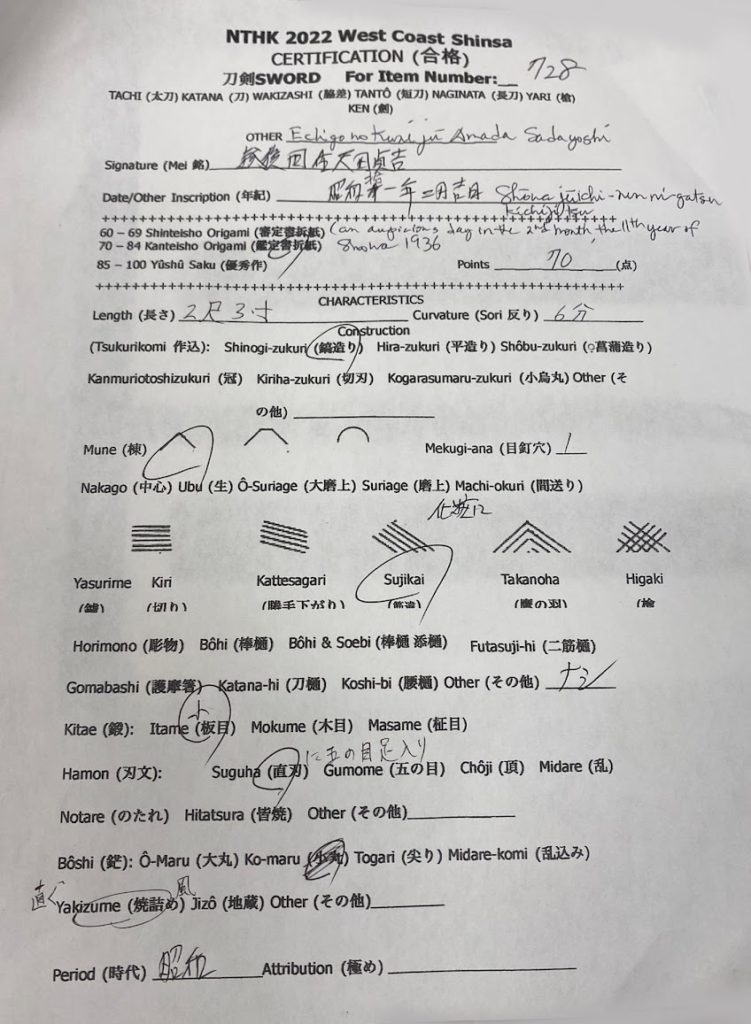Description
Isoroku Yamamoto and the sword-smith Sadayoshi Amada
by Junichiro Watanabe
Published on May 10, Showa 60, NBTHK #340
Translation by Hisato Takeuchi
After Mukden Incident in September 1931 and the following “January 28 Incident” in Shanghai in 1932, various patriotic movements broke out at every place in Japan. The Veterans Association of Japan not only donated warplanes to the Japanese government by themselves but also they promoted donation of swords from civilians. In Echigo, there were wealthy farmers collecting antiques as their hobby for generations. They proudly donated their sword collections; one individual provided to the commander of the local Army regiment more than one hundred swords including ones with inscription of famous sword smiths. Eiichi Sorimachi, the chairman of Nagaoka Veterans Association, was appointed to be in charge of wielding the valuable swords. He brought the story to the Minister of Education, Sadao Araki, an army general. Araki dispatched Junji Honma, a sword expert, as an appraiser(investigating officer)of those swords. Honma then pointed out that all of those inscriptions are fake(gimei). The news quickly spread to the entire prefecture, and many collectors, who had been believing words of sword dealers, contacted the news paper publishers and appealed demands to hold some sort of “official” sword inspection meeting.
At the time in Nagaoka city, there was only one organization of sword collectors/inspectors. Once or twice a year they held a workshop of inspection inviting Noboru Kawaguchi of the Japanese Sword Academic Society to the house of Michiharu Takeyama. Michiharu Takeyama was the chairman of the organization and an army doctor with the rank of Lieutenant Colonel. In March 16th, 1933, knowing that Kawaguchi is in town, I proposed to have a sword inspection meeting. Mr. Koike, my manager at the Hokuetsu News Corporation, agreed to use the corporation facility and we both went to see Kawaguchi to ask him to participate. As a result, on June 5th and 6th, we held the first ever sword inspection meeting in the prefecture at the third floor of the Hokuetsu News Corporation building. We invited a local sword-smith, Sadayoshi Amada, to the meeting. Sadayoshi was helping the organizers at the meeting. I noticed he was called in by Kawaguchi and talked with him several times. After the meeting, Kawaguchi stayed at Takeyama’s house, and Sadayoshi spent a night at my place. Drinking sake with me, Sadayoshi said “today, I met so-called ‘connoisseurs’ for the first time. I was truly surprised by Kawaguchi saying to me ‘they are all your works, aren’t they?’ He pointed out all the swords that I made for some local dealers with fake inscriptions (gimei). I must be in trouble. What should I do?” Mr. Kawaguchi at Takeyama’s house on the other hand told Takeyama “this man, Sadayoshi, must be really skillful. He shouldn’t be exploited by such dealers,” and even suggested to organize patrons for him.
The following day, we all had dinner at Tokiwa Tower Restaurant. The story of Sadayoshi was told by Takeyama to everybody. We all agreed to have a support group for Sadayoshi by offering his products for 50 yen each for regular grade swords (with commemorative mei but not suitable for cutting) and 100 yen for upper grade swords that have good cutting capability and can actually be used as military swords. In addition, 20-35 yen for each blade to cover saya, habaki and polish. The news was reported on the Hokuetsu News, the prefecture’s largest newapaper, which was published by our company. Sadayoshi then received about ten orders for regular grade swords. One order came from Shigezou Shimoda, a military surgeon at Nagaoka city. Shimoda ordered a regular sword but wanted the best quality polish. Sadayoshi made the katana and sent it to Suekichi Fukaya, a polisher who lives in Mejiro, Tokyo near Gakushuin (then the school for noble families) and often visits Takeyama to take care of his swords.
Figure 1
Hand-written letter by Sadayoshi Amada
??? (Teacher) – Michiharu Takeyama
??? (Kawaguchi sama) – Noboru Kawaguchi
??? (Watanabe sama) – Junichiro Watanabe (author)
In 1934, Japan Sword Smith Association (Dai-Nippon To-Sho Kyokai) was going to hold the first “Exhibition of New Works of Japanese Sword” in Tokyo supported by the Ministry of Education. Kawaguchi encouraged Sadayoshi to submit one of his works to the exhibition, and Sadayoshi began the work to make one from scratch. However, he later visited Hokuetsu News with a sword he just finished, told us that he did not produce anything that he could confidently present and wanted us to wait another year. Then I told him that this time to leave this all to me. I immediately jumped on to a train to the capital grabbing the sword Sadayoshi previously made for Shigezou Shimoda. At Ueno Park (Tokyo Public Fine Arts Museum), I was filling out the application to submit the sword to the exhibition; I was a little troubled doing so as I was not the sword smith himself. A person in the crowd pulling carts full of swords, who I immediately recognized as Akihide Kurihara, passed right next to me. I stopped him and said that I am having trouble filling out the form. Kurihara kindly checked the form and said, “This is good. Let me just take a look at the sword.” I showed it to him and he said, “This is a great work. Who is the master of this sword smith?” He is local and has no master, I answered. Kurihara then just picked up the sword as well as the application, so I returned to Nagaoka city right then. I literally jumped and was so glad when I later heard on the radio that the sword won the Prime Minister Award at the exhibition.
* * * * * * * * * *
On New Year’s Eve 1934, Kihachi Takano, a local dentist, visited the Hokuetsu News Corporation and informed us that his younger brother, Isoroku Yamamoto, who now is in England, will return to Japan and visit the family grave at Nagaoka, so he wanted to place an order of a “100 yen” sword made by Sadayoshi, the Prime Minister Award winner. On New Year’s Day, I forwarded the request from Takano to Sadayoshi, and he gladly accepted it and said he will put forth his best effort. The end of March, Sadayoshi brought two swords to us; one with a chu suguha hamon and one with a midare hamon. In order to make the deadline, he said that he asked Kintarou Takada to make the saya and Fukumatsu Abe to do the polish. I carried them to Takano, and he said he is going to ask Sorimachi and Utashichi Komagata to decide which sword he will give to his brother. He then visited us at six pm on the same day and picked the chu suguha katana for Yamamoto, stating that because Yamamoto is a navy man, the “quiet wave” of chu suguha will probably be better. He returned the other sword back to us; I kept this “kage-uchi (Shadow Sword)” for myself as Sadayoshi wished and have carefully preserved it since then. (Figure 2)
Figure 2
* * * * * * * * * *
When the London Negotiation was recessed on December 20th, 1934, the Japanese government ordered Yamamoto to return to Japan. Yamamoto and his colleague through Siberia arrived at Tokyo on the afternoon February 12th. When he had finished the official reporting, Yamamoto had some free time probably for the first time since he began serving in the Navy. Sorimachi proposed that he should take a rest at his home in Nagaoka at this opportunity, and Yamamoto agreed. He then arrived at Nagaoka station at 2:30 PM, April 13th. He visited his brother Kihachi Takano and went to the family graves at Choko temple and Chofuku temple. The next day he visited Sakanoue Elementary School and Nagaoka High School, both of which he graduated from, and had lecture meetings. He stated in the meeting,
“As a human being, in a lifetime, there are a number of opportunities where you receive moral gifts. You have three moral gifts you must not forget. One is from the emperor. If you forget it, you are not Japanese. Secondly, the gifts from your parents. If you forget it, again, you are not Japanese. Lastly, the gifts from your masters — teachers, in other words.”
In April 15th, Yamamoto said to Sorimachi, “as you know, I’ve been out of Niigata for a long time. I barely know the place, people and things in Niigata. But I would love to look around all over the prefecture during this opportunity. I would ask you to kindly guide me through. I would start with seeing my high school friends who must be living near Nagaoka.” The trip started on 16th of April. They visited Kanamine Shrine at Zaou, Yahiko Shrine of Echigo-Ichinomiya, Shinano River near Oh-kawatsu, Honsei temple at Sanjyo to see the cherry blossoms, and stayed at Hakusan Shrine. At Takanosu hot spring, Yamamoto wrote “Yamamoto Isoroku, 52, 2 Sakanoue Nagaoka City; A sailor ” on visitor’s card. At Kaji River, he did a handstand on a stem of the boat. The friends he visited were Sazaemon Omori at Kamikawa-nishi, Koshiro Hasegawa at Shimagami, Shogo Uchiyama at Kashiwazaki and Shozo Takeuchi at Takase. On 28th, he returned to Tokyo with the sword with inscription “????????” (“Echigo no Kuni Ju Amada Sadayoshi”) given by his brother Kihachi. During the trip, nobody recognized him since they both were wearing old winter military uniforms, which were more than twenty-years old.
On December 2nd, 1935, Yamamoto became the Naval Aeronautical Chief. Sorimachi later stated in his book “Human: Isoroku Yamamoto” that Yamamoto might have felt that this duty was the most satisfied task in his whole life. On December 1st, 1936, the Lieutenant General Yamamoto became the Vice-Secretary of the Navy.
Yamamoto believed, unlike many others at that time, that if Japan joins the alliance of Germany and Italy, the relationship between Japan and the United States and Great Britain would only get worse and that there will be no way to avoid fighting against them. For the name sake of world peace and for Japan to survive, Yamamoto strongly wanted government not to agree on the alliance with Germany & Italy. Admiral Kichisaburo Nomura, who later became an ambassador to the United States, remembered an episode. “One day, I entered into Yamamoto’s room. A newly enacted military sword was sat down right behind him. ‘What a great sword’ I said. Yamamoto smiled, said ‘If rude fellows come in here to assassinate me, I’ll kill them all by this sword’ and laughed loudly. He was really a courageous man.” That very sword was Amada’s work.
Opposing to the Japan-German alliance at that time was risky and perhaps required a preparedness of death. Several dozen of anonymous threats were sent to Yamamoto. Papers and magazines called him a national betrayer. Though, Yamamoto never ignored them and rather read them all through carefully trying to figure out if he was somehow wrong. But all of them were just meaningless threats.
“If you carefully analyze the military power of Japan against the United States and Great Britain, you have to conclude that there is no way for Japan to compete and survive. We have already been fighting against China for five years. Fighting against the United States and Great Britain, possibly Soviet Union as well? No way. If Japan signs up the alliance with the Germany and Italy as most of the public opinions say we should, Japan probably will be promptly destroyed. I have to be a piece of stone which stays to oppose to a torrent; I would proudly become such a piece of stone. A stone will be swallowed up by the main flow sooner or later. But I must do it for Japan. It is the way of samurai; my destiny.”
Yamamoto had written a will (predicative will) and always kept it with him.
Figure 3
Yamamoto holding the sword inscribed “????????” (“Echigo no Kuni Ju Amada Sadayoshi”) at the base in Rabaul, Papua New Guinea.
On August 20th, 1939, Yamamoto became the commander of the United Fleets and its First Fleet Division. On November 11th, 1940, the celebrating conference of 2600th imperial year was held at the Double-Bridge Park in front of the Emperor’s Palace. The emperor had a speech there under the bright sun. A few days later, Sorimachi who attended to the conference, talked to Yamamoto to share his impressions. Yamamoto answered, “Yes, I was invited, but I did not attend, so I cannot tell you how it was for me. It was an occasion where probably all of the government people and the emperor gathered in one place. We are at war against China. Jiang Jieshi (Chiang Kai Shek) is a great commander and he has a good Airforce power. If I were he, I would just attack the Double-Bridge Park and easily destroy Japan. Therefore, I was with the fleet watching the sky two entire days. It was nothing but luck that I did not see any airplanes coming.” On November 15th, 1940, Yamamoto was promoted to the rank of admiral.
In 1941, the tide of war situation turned to be totally opposite of what Yamamoto, who had been considering retiring in the coming fall, desired. Yamamoto had to face the war against the United States and Great Britain as the highest positioned commander. Early morning on December 8th, Yamamoto transmitted the following words to all troops “The rise and fall of Imperial Japan is entirely up to you. You are asked to make every effort for successfully executing what you are responsible for.” Yamamoto repeatedly confirmed with Shigeru Fujii that the declaration of war will certainly be delivered before the attacking. — In spite of the splendid results in its early stage, the situation turned to be worse and worse in years. August 28th, 1942, Yamamoto on the flagship Yamato entered into the Truck Islands. Preparedness of his decision was written in a short letter sent to Sorimachi.
“Within hundred days, I will wear out my life entirely.”
At the shadow of a palm tree, Isoroku Yamamoto.
September 1942
Nine o’clock in the morning of April 18th, 1943, Yamamoto and the general Ugaki left for Bougianville on two attack planes escorted by nine fighter planes. At 9:43AM, they faced twenty-four U.S. fighter planes. The two attack planes tried to evacuate by flying low, but the planes got hit and with both engines on fire, quickly crashed into the jungle. Yamamoto was found with a bullet wound in the left jaw which pierced him through the face, considered a fatal wound, and another bullet in his back, wearing white gloves, holding the sword by Amada Sadayoshi between his legs. The sword itself got shot three times; two on the saya and one on the tsuka. He was fifty-nine.
“An oath to be the shield of the imperial Japan does stay forever even after my life has ended”
The note above, dated April 3rd, sent to Yamamoto’s close friend Hori, the lieutenant general, had unexpectedly become Yamamoto’s last words.
Amada, 38, died in April 1937, years earlier than Yamamoto. The sword therefore was actually a keepsake for Yamamoto.
I personally have met Yamamoto five times total.
April 14th, 1935, at the auditorium of Nagaoka High School.
April 23rd, 1935, another lecture meeting at Nagaoka city hall.
Twice in January 1937, an inquiry of his brother Kihachi at Nagaoka.
June 25th, 1937, at the funeral of Kihachi, when Sorimachi whispered to him that I had brought a condolence gift from the Hokuetsu News Corporation, he turned, looked at me and distinctly said “Thank you.” That was the last time I ever saw him.
– Junichiro Watanabe
President of the NBTHK Nagaoka Branch

